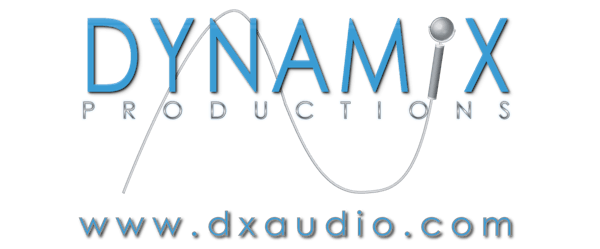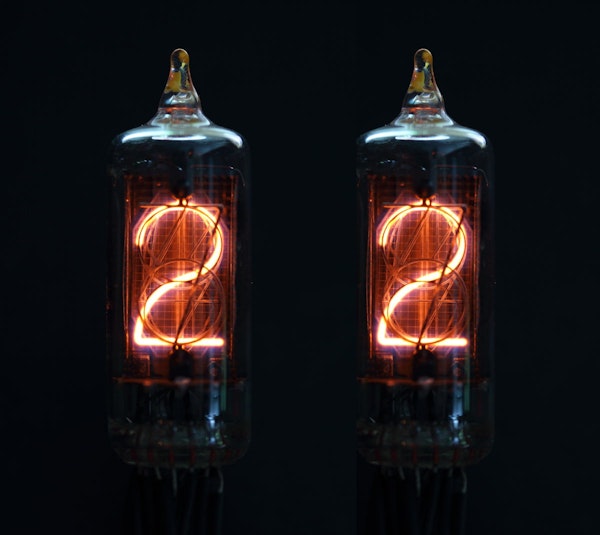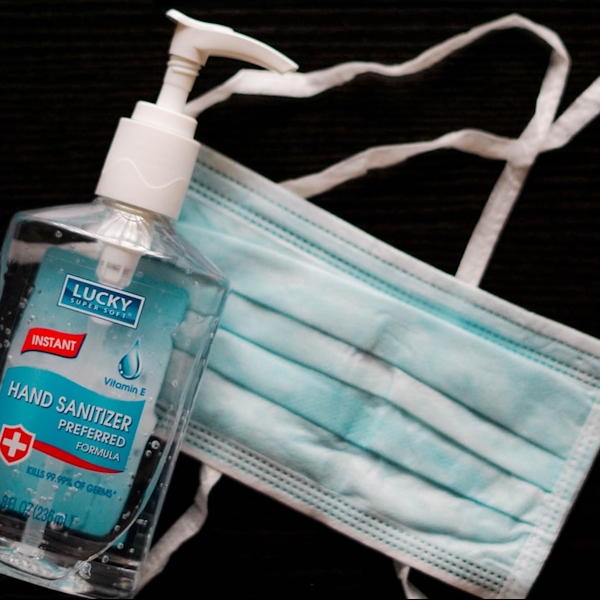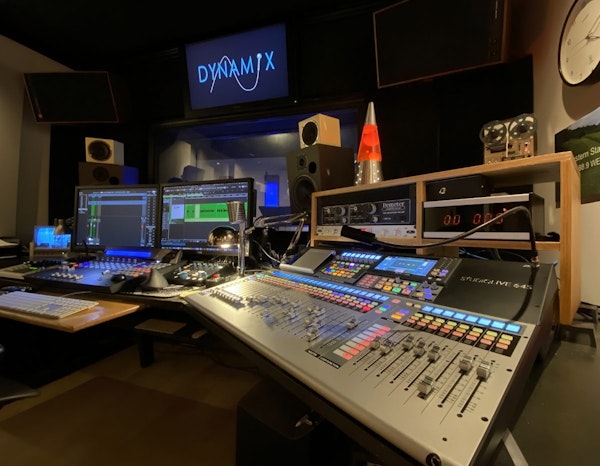FEBRUARY 2022 THE LATEST NEWS FROM DYNAMIX |
WHAT'S NEW IN '22!PART II |
Last month we began the tale of the great 1922 boom of commercial radio. The number of broadcasting stations and radio sets quickly mushroomed faster than any other technology in the world. In one year alone, the number of radios in American consumers' hands exploded from 50,000 to nearly a million. Read part 1 here. Ma Bell (AT&T) was determined not to be left out of the sudden popularity of radio. It had already been developing radio techniques for extending telephone call service for several years, so AT&T easily stepped into the commercial radio business. Its first station, WEAF (now WFAN) in New York, went on the air in February 1922. AT&T's goal from the start was to build a radio network. Less than a year later, WEAF and WNAC (now WRKO) in Boston were linked together for radio's first network broadcast. Two more stations joined the network in the following months. What's important to know is that this was done over telephone lines, which they controlled. As new listeners tuned in to news, sports scores, impromptu musical performances, records, and even bedtime stories, business owners took notice. This was a prime opportunity to advertise to a very captive audience. When radio with the start it already has, receives the further thought and scientific development of the next few months it will be completely adapted for many kinds of commercial enterprises that do not employ it as yet. It will become as necessary as transportation. It will be communication personalized. There will be no limit to its use.
How to Retail Radio, 1922
The radio boom had created a whole new market for industries, some selling directly to the radio enthusiast:
It is in the sale of batteries for radio work and in the recharging of them that the battery man can 'cash-in' on the radio phone 'craze.'
The Automobile Storage Battery, 1922
Selling radios and the batteries to make them work was one thing. Selling on the radio became a whole new industry. The first radio broadcast advertisement was on WEAF on August 22, 1922 at 5 PM. AT&T had built its telephone business on charging by the minute, so it was only natural to parlay that business model over to radio. Hawthorne Court Apartments in Jackson Heights, New York bought 10 minutes of airtime for $50. By October, WEAF had sold $550 in advertising. Executives called their simple formula of trading airtime for dollars "toll radio." It was here to stay. For advertising to be successful, the programming had to be enticing to listeners. Everybody was learning this new craft and stumbling through each broadcast, but a few started to develop regular programming in 1922. The previous year, Frank Conrad advertised schedules of music entertainment to be played on his little amateur station in Pittsburg. His listeners ballooned from 200 to 400 almost overnight. Horne's Department Store advertised that his radio station could be heard on radio sets sold by Horne's: AIR CONCERT "PICKED UP" BY RADIO HERE
Victrola music, played into the air over a wireless telephone, was "picked up" by listeners on the wireless receiving station which was recently installed here for patrons interested in wireless experiments. The concert was heard Thursday night about 10 o'clock, and continued 20 minutes. Two orchestra numbers, a soprano solo- which rang particularly high and clear through the air- and a juvenile "talking piece" constituted the program.
The music was from a Victrola pulled up close to the transmitter of a wireless telephone in the home of Frank Conrad, Penn and Peebles avenues, Wilkinsburg. Mr. Conrad is a wireless enthusiast and "puts on" the wireless concerts periodically for the entertainment of the many people in this district who have wireless sets.
Amateur Wireless Sets, made by the maker of the Set which is in operation in our store are on sale here $10.00 up.
Gwen Wagner, another radio pioneer who did just about every job at the upstart WPO in Memphis, Tennessee, shared that station's program from its innaugural broadcast in 1922: 7 p. m.--Baseball results.
7:05 p. m.--News brevities.
7:20 p. m.--Cortese Bros. on harp and violin.
7:50 p. m.--Bedtime story.
8:10 p m.--Selections on the reproducing piano.
8:30 p. m.--New records on the phonograph.
Radio Age, September 1925
Music was often heard on this newfangled device – sometimes out of true desire by the operator to enrich the lives of listeners, and sometimes just to fill time. One thing was certain, live music sounded better than music from records. That's because radios used electrical microphones, and records were still being recorded and played back mechanically (you know, with the big bell protruding from the tone arm). Electrical microphones weren't being used yet to produce records (though telephones had been using them for decades), and they were still being played back with a steel needle that was amplified by a large bell. As a consequence, radio exploded, and record sales fell off. It wouldn't be until 1925 that records began to start selling in large numbers again. That's when RCA Victor started recording with the better electrical microphones. They also built an electrical reproducing turntable that didn't need to be wound up. |
 |
Since radio was so new, many were having trouble figuring out what the audience wanted to hear. George H. Fischer, Jr. of Pierce Electric Company in Tampa, Fla. complained that "too many stations have persisted in filling the air with 'jazz' and nothing else." He recommended more variety because he had heard too many Sunday School sessions, lectures, pick-up bands, and "long-winded orators with no time limit and uninteresting subjects."
The big corporations and government felt incumbent to control what the public heard on radio. Most felt that classical concerts would enhance the lives of listeners. Scholarly lectures, school lessons, and church services would round out acceptable programming. Said one writer in The Radio Dealer in 1922, "In the territory where broadcasting stations are found in great numbers the 'canned music' may have little appeal but in the territories at a distance beyond the daylight range of the big stations it is almost a necessity." However, the small independent radio stations were mixing up their programming, if you can call it that, with anything that came to mind, including jazz. These were heady days for both the radio operators and the listeners alike. They were experiencing the wild west of radio. But not for long.
The U.S. government wanted to be rid of playing music records on the radio all together "out of public good." The record industry and musicians' unions had called on U.S. Commerce Secretary Herbert Hoover to stop the practice. Part of the reasoning was that those industries depended on record sales, and the public was effectively listening for free. Soon after Hoover issued his moratorium, ASCAP and commercial stations entered into contracts to allow them to play music on the air. This started the growth of corporate-owned stations and networks, and the decline of small stations that couldn't afford the hefty fees.
Where one tuned on the radio dial to listen to their favorite station was also up for debate in 1922. The government, in its usual "wisdom," allocated two places in the radio spectrum for stations in December 1921:
Licenses of this class are required for all transmitting radio stations used for broadcasting news, concerts, lectures, and such matter. A wavelength of 360 meters is authorized for such service, and a wavelength of 485 meters is authorized for broadcasting crop reports and weather services, provided the use of such wave lengths does not interfere with ship to shore or ship to ship service.
On paper, having a separate place for farm reports and weather made sense. Farmers in remote areas would hopefully have a clear signal at 485 meters (about 618 KHz on the AM dial). Having everything else on 360 meters (833 KHz) had listeners quickly tuning back and forth throughout the day. As stations became plentiful, most occupying 360 meters, overlap became a problem. Stations had to vary their power throughout the day and night to avoid this, often without success. |
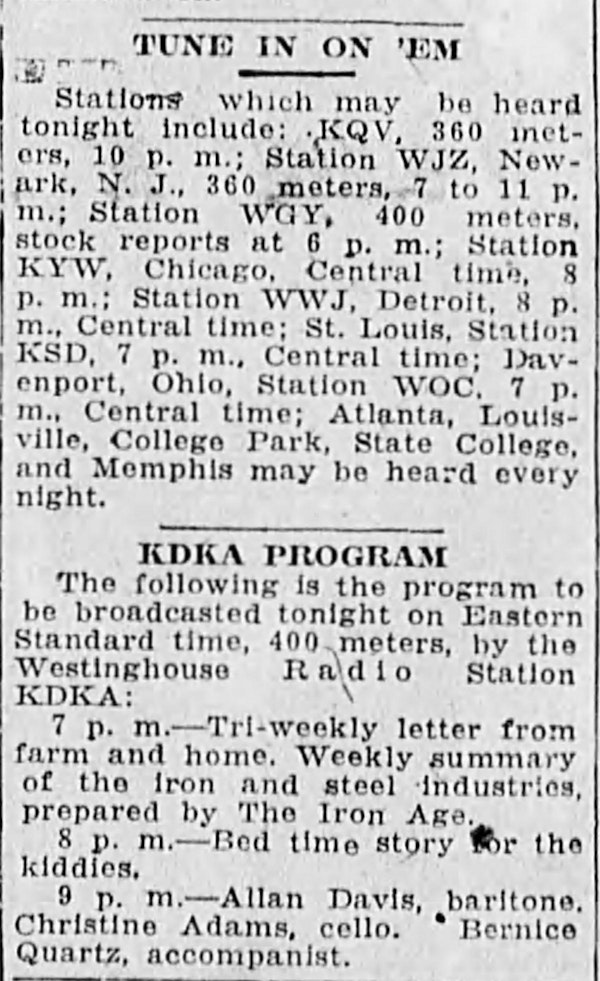 |
The equipment that radio stations used was nascent technology in the early 1920s. When WLW went on the air in 1922, a broadcast engineer later noted that just staying on one frequency was impossible with early broadcast transmitters. The signal would drift up to 10 meters in either direction of 360 meters (810-850 KHz). The government eventually acquiesced and spread stations out across the now familiar AM radio dial. The only survivor from these early days in radio is the NOAA Weather Radio network, which maintains more than 750 transmitters and covers nearly 90% of the 50 states. Radio had great potential, anybody could see that – including the newspapers. They saw doom and gloom ahead because their newspapers were being read on the air – without financial reward – though the real decline of newspapers happened later in the decade. Some publishers saw dollar signs instead and invested in radio to sell more copies. By the end of 1922, about 10% of the 570 stations in the U.S. were owned or controlled by publishing companies.
Today, media cross-ownership is as prevalent as ever, especially with television, the internet, and streaming mediums. Radio isn't as relevant as it was in the 20th century, but it's still alive and kicking. Edison Research says that 87% of all in-car ad-supported listening is traditional radio. 45% of all radio listening occurs in cars, 32% at home and 23% at work. The most listened to time period is mid-day (M-F 10 AM - 3 PM) which is about 27% of all radio listening. I hope there is still a big audience for that most important broadcast of the day: Bedtime story for the kiddies.
|
Dynamix Productions, Inc. is an audio production facility in the heart of thoroughbred horse country, Lexington, Kentucky. Some of the many audio services we provide are: sound-for-picture, corporate communications, advertising, narrations, audiobooks, podcasts, live broadcast, ISDN, location and remote recording, restoration, and tape/LP to digital transfers.
Since our opening 18 years ago in 2003, we have won or been a part of nearly 100 awards; including more than 75 ADDY's (American Advertising Federation), 10 Telly's, 2 Silver Microphones, 1 PRSA (Public Relations Society of America), 1 Eclipse Award, and 1 Emmy nomination.
Why do professionals from desktop producers to Fortune 50 companies choose Dynamix for the highest level of production? We Listen. |
|
|
- ADR with actor Colton Ryan for Hulu's mini-series "The Girl From Plainville." (Universal Content Productions, Universal City, CA)
- Workplace Training Video modules for UK HealthCare employees. (UK HealthCare, Lexington, KY)
- "AgFuture" podcasts for Alltech (Alltech, Nicholasville, KY)
- "Family & Community Medicine" radio campaign for UK Healthcare (Team Cornett, Lexington, KY)
- "Block Talk" podcast for Ridley Block (Alltech, Nicholasville, KY)
- Fasig-Tipton "Winter Mixed Sale" TV soundtrack (Studio 34 Productions, Lexington, KY)
- A&W Restaurants "Summer '22" TV and radio broadcast advertising campaign. (Team Cornett, Lexington, KY)
- Sound design and mix for teaser of upcoming feature "Wimbledon Dreams." (Christopher Kelder, Lexington, KY)
|
|
|
We are taking the COVID-19 pandemic seriously here at Dynamix Productions. We're taking safety measures recommended by health officials. We're currently allowing fully vaccinated people to work mask-free in our building as long as ALL people are fully vaccinated. Our producer desk and engineer seat is more than 6 feet away in each studio, and there is glass between the engineer and voice talent. We're still encouraging smaller groups here, but if all parties are fully vaccinated and agree, we can record up to two people at a time in our VO room A. For recording three people, we can put another person in our second VO booth and link them together via Zoom or Skype. We can also have two producers in our Control Room A as long as all parties are fully vaccinated and agree. We sincerely wish that you and your families will stay safe and secure during these unusual times. For more on our new procedures and options for you, read this special statement. -Neil Kesterson |
| 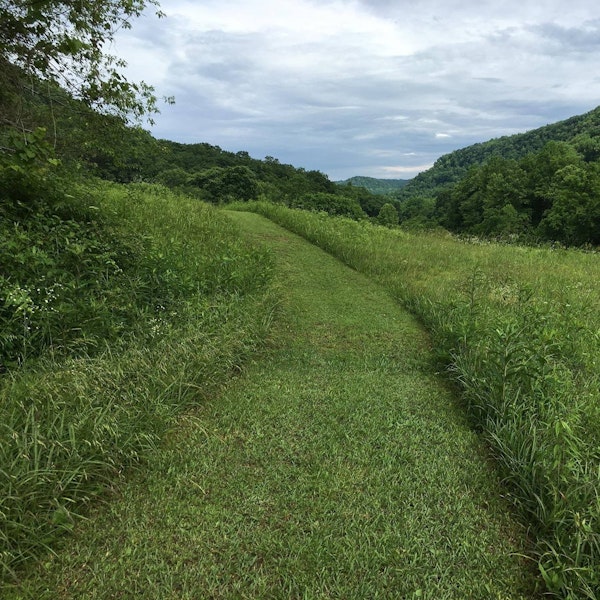 |
Dynamix Productions, and WEKU-FM, Eastern Kentucky University's public radio station in Richmond, KY, partnered in 2018 to move primary production of the popular long-running radio program EASTERN STANDARD to the studios of Dynamix. The first program produced at Dynamix aired on July 19, 2018. By bringing the production to Lexington, producers have easier access to Central Kentucky business, healthcare, and education leaders, as well as local artists, entertainers, and other newsmakers. The move underlines WEKU's commitment to providing the area's most concise and in-depth coverage of news, issues, and ideas that directly affect Central Kentuckians. Hosted by network news veteran Tom Martin, EASTERN STANDARD is a public affairs program that covers a broad range of topics of interest to Kentuckians. Resources for topics include WEKU's reporting partner, the Ohio Valley ReSource, a partnership with seven public media outlets across three states; the Kentucky Center for Investigative Reporting; and National Public Radio. EASTERN STANDARD can be heard Thursdays at 11:00 AM / 8:00 PM and Sundays at 6:00 PM on 88.9 WEKU-FM, and online at www.esweku.org. Did you miss the live show? Listen online. |
|
|
TELEVISION PROGRAMS PRODUCED AT DYNAMIX 
THE WHITE LOTUS on HBO
A social satire set at an exclusive Hawaiian resort, the series follows the vacations of various hotel guests over the span of a week as they relax and rejuvenate in paradise. But with each passing day, a darker complexity emerges in these picture-perfect travelers, the hotel's cheerful employees, and the idyllic locale itself.

SECRET CELEBRITY RENOVATION on CBS
A new one-hour series that gives celebrities in sports, music and entertainment the chance to gift a surprise home renovation to a meaningful person who helped guide them to success. Hosted by Nischelle Turner (ENTERTAINMENT TONIGHT), SECRET CELEBRITY RENOVATION provides stars with a hands-on opportunity to show their gratitude to someone who has had a significant impact on their life's journey by helping to realize the renovation of their dreams. Those participating in making these heartfelt gifts include Emmy® and GRAMMY® Award-winning singer and choreographer Paula Abdul; award-winning singer-songwriter Lauren Alaina; Emmy®-winning actor and comedian Wayne Brady (LET'S MAKE A DEAL); NFL MVP and CBS sports analyst Boomer Esiason; GRAMMY®-winning artist Eve; Emmy®-nominated actor Jesse Tyler Ferguson; SURVIVOR winner "Boston" Rob Mariano; NBA All-Star Chris Paul; GRAMMY®-winning singer, songwriter and actor Anthony Ramos; and Pro Football Hall of Fame running back Emmitt Smith. The series also features the design team of home improvement contractor and television personality Jason Cameron ("Man Cave," "While You Were Out") and interior designer Sabrina Soto ("Design Star," "Trading Spaces").


ESCAPE TO THE CHATEAU on HGTV
Lieutenant colonel Dick Strawbridge and his partner Angel Adoree trade their English apartment for a dilapidated, 19th-century French chateau. The pair work to restore, renovate and redecorate the estate into a fairytale castle for their upcoming wedding.

YOU LIVE IN WHAT? INTERNATIONAL on HGTVArchitect George Clarke is on a mission to find inspiration for his outrageous, space-age concept house. His journey takes him around the world to meet the visionary people who build and live in some of the most unusual homes ever seen.

COUNTRY COUNTDOWN on The Circle Network
PODCASTS PRODUCED AT DYNAMIX

Vote Worthy helps to inform voters about the issues and challenges surrounding the 2020 General Election.

The Cancer Crisis in Appalachia"
Compelling stories from the next generation of leaders in the fight against cancer in Appalachia.
From UK's Markey Cancer Center.

"Tales of American History" with Kent Masterson Brown

"The Tyler Gossett Podcast"

GoFundMe podcast "Todd Oldfield and Wendall Gill: A Community Comes Together"

"Embedded" podcast from NPR
Al Cross in a series of podcasts about Mitch McConnell
AUDIOBOOKS PRODUCED AT DYNAMIX
    
  
  
  
  
  
  
  
  
  
  
  
  
  
  
 
OTHER PROJECTS PRODUCED AT DYNAMIX
|
|
|
OUR MAILING ADDRESS IS: Dynamix Productions, Inc. 333 N Ashland Ave, Ste 120 Lexington, KY 40502 |
| |
|
| |




